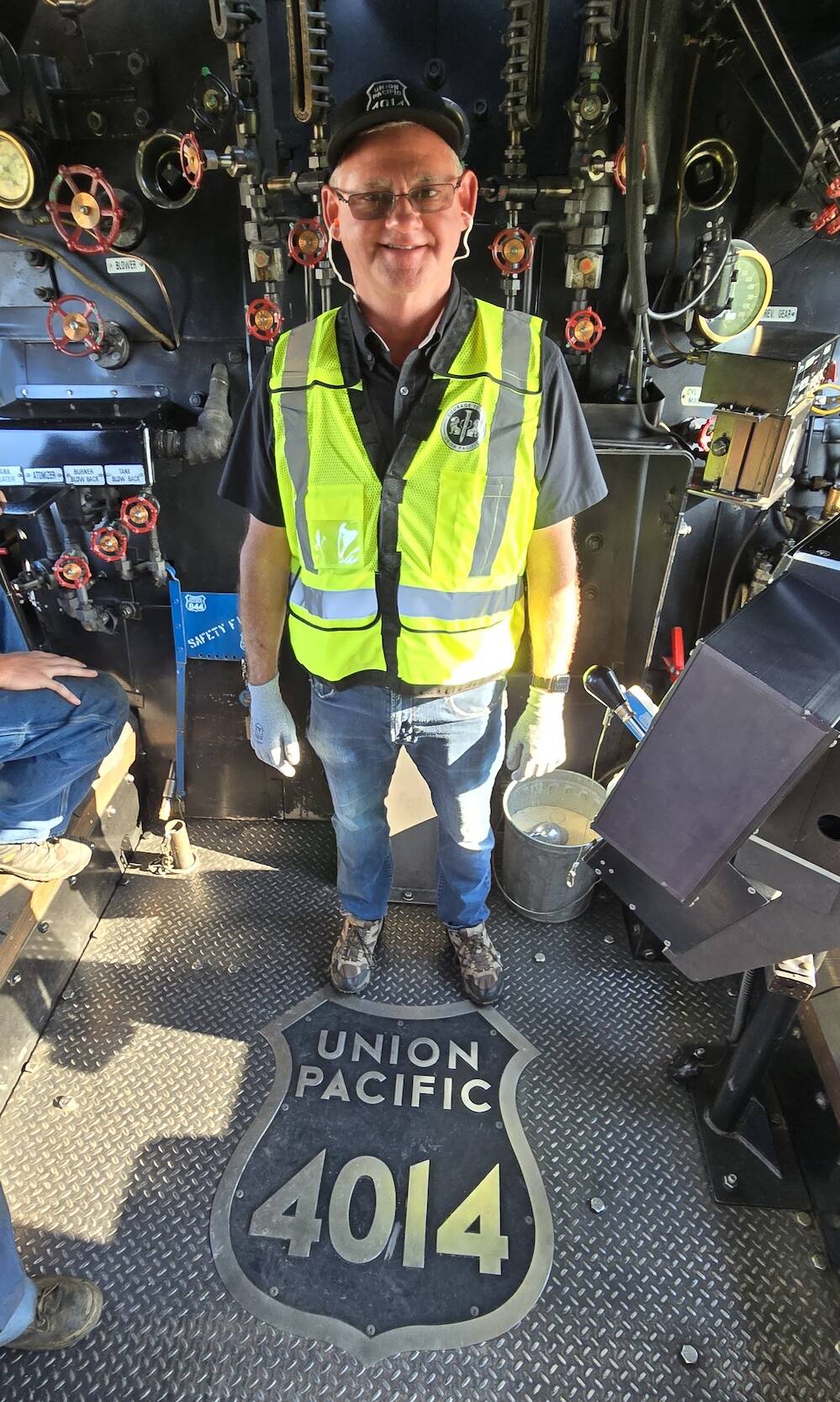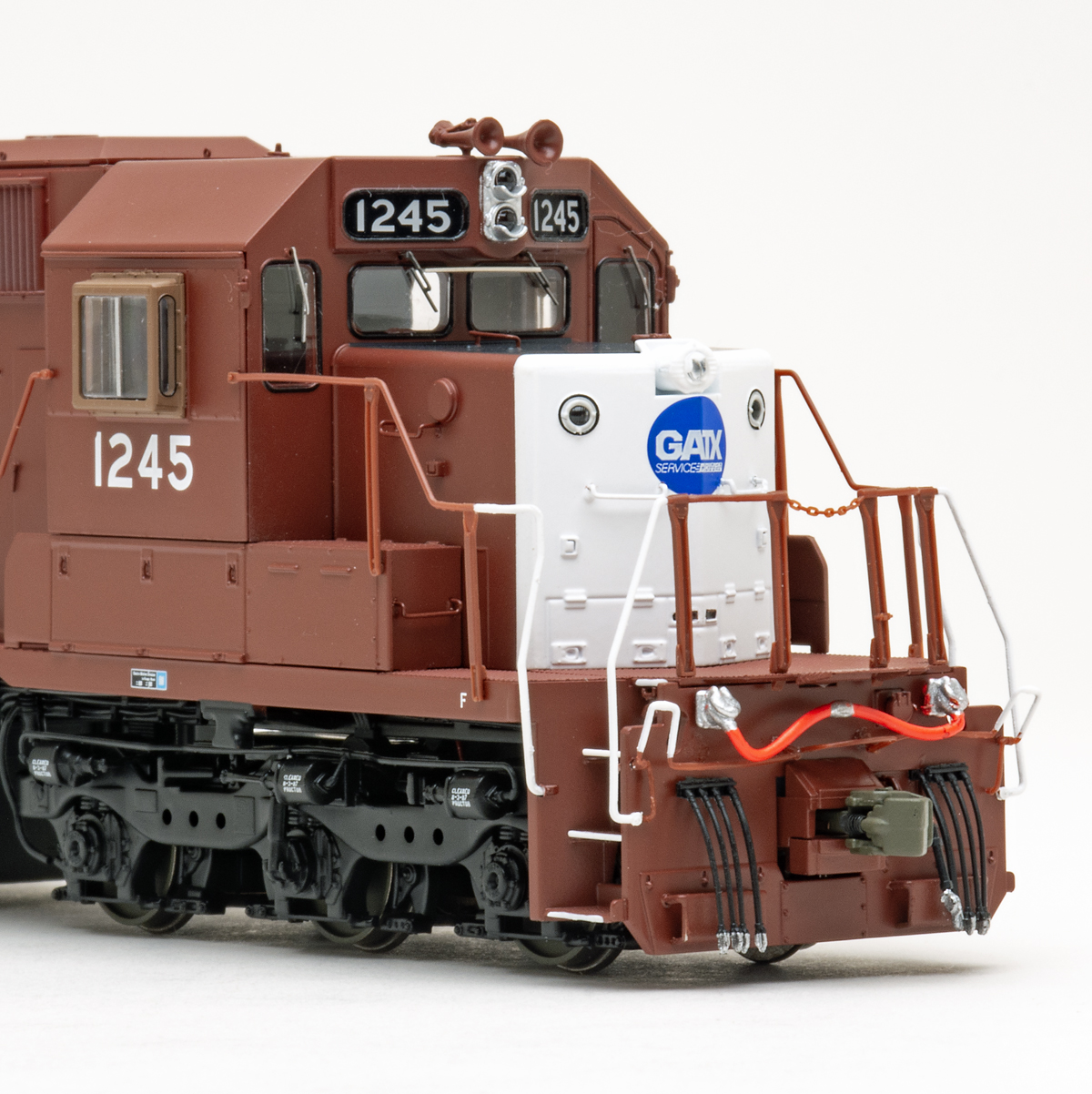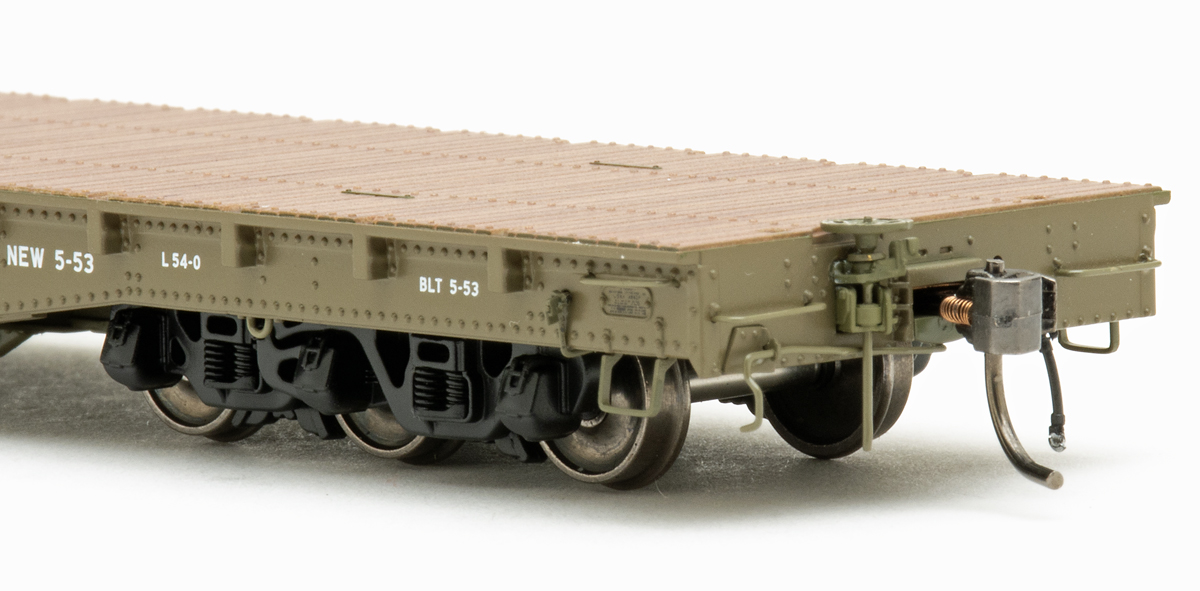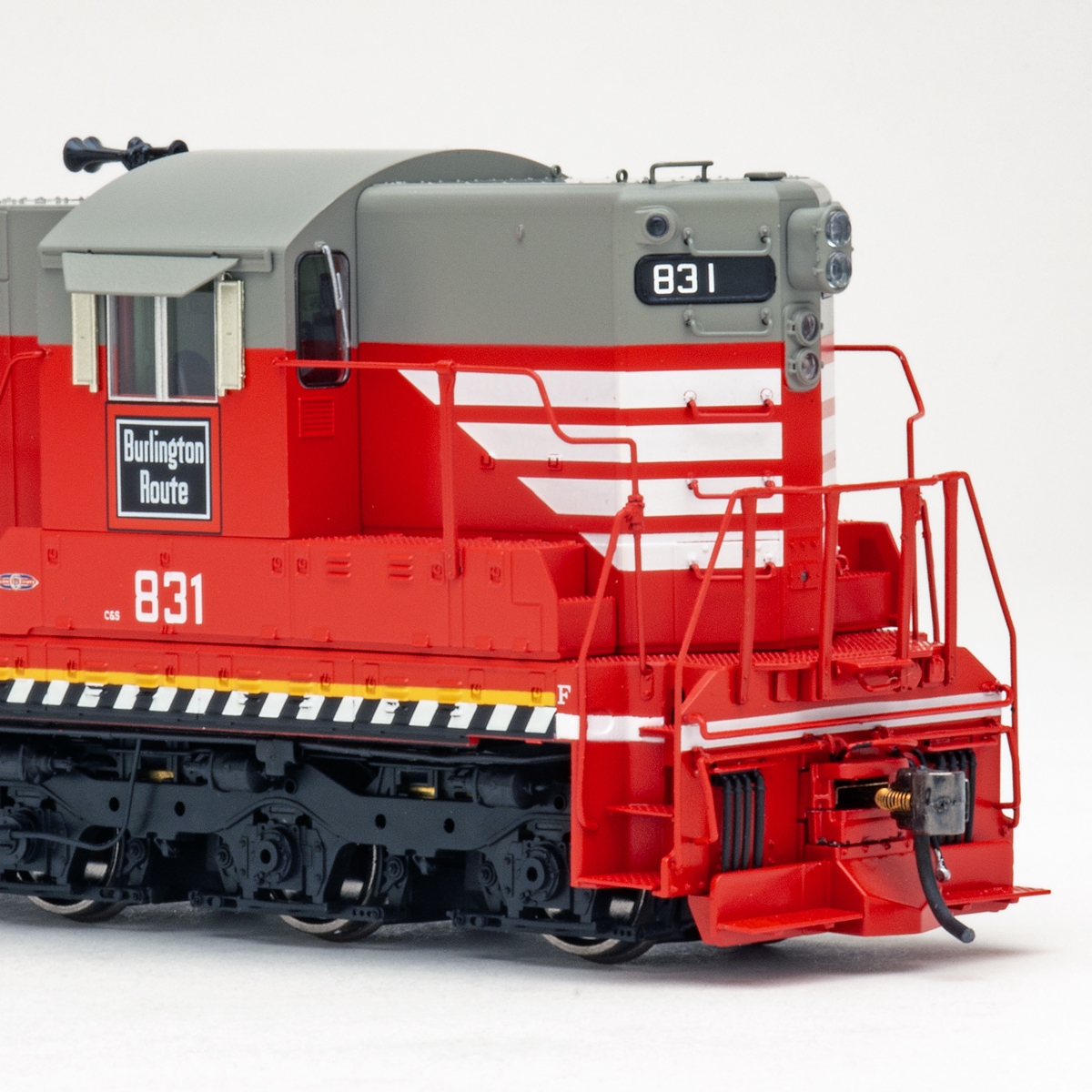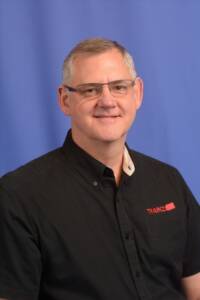
Trainz.com Founder and Chief Engineer Scott Griggs took time out of his busy schedule to remotely drop by for a Q&A interview with Trains.com Staff Writer Lucas Iverson. Through these inquiries is a behind-the-scenes look at the past, present, and future of this growing company.
Watch the video of this interview on Trains.com Video
Q: For those who may not be familiar with your company, how would you summarize Trainz.com and the services it can provide to new potential customers?
A: There’s really two big things we do.
The first is we buy train collections, usually from collectors and operators as they’re either getting older or pass away. We’ll make a good offer and then come and pick up all that stuff. Then, of course, we list them online for sale on both eBay and our website.
One of the unique things that we provide to the model train community is our wish list. If you’re a collector that got the red, blue and yellow trains, and you’ve been trying to find the brown one but can’t find it, we got a wish list from our database of about 350,000 items that we’ve had in the past. So you can log into our website, find the brown one, click the little heart, and then the next time we get one, it automatically sends you an email so that you’ve got an opportunity to buy that before it gets snatched up right away.
The other big service we provide to the community is parts. We have over 30,000 train parts on our website and just started in the last three months creating online, exploded-view interactive parts diagrams. I got the okay from Lionel to use their diagrams from the postwar, MPC and early LTI eras, and we have been digitizing those.
We’ve also created a couple of them, like for the Lionel Tie-Jector car and the 45 mobile missile launcher. There were no exploded-view parts diagrams for those. We now got a graphic artist on our staff to draw out the parts that were missing and then put it all together.
Q: How did your career and Trainz get started?
A: It all really started when I was 8 years old. My dad got me a used Lionel set, but it wasn’t just a train with a circle of track. He worked at a car dealership, and the owner had sons that were older than me. So they had a pretty extensive set. My dad bought that and set it all up in the basement for me.
When I was 14, I took a correspondence course from the National Radio Institute on servicing small appliances and then started “S&G Electric Train and Appliance Service” at my parent’s garage when I turned 15. I did that all through high school and college. I’m mechanically inclined so fixing stuff is really at the core of who I am as far as trains, where I got started, and what I did most of my life.
I then met my wife Melinda, and recruited her into my weekend warrior schedule where we’d go to train shows in Ohio, Michigan, and Indiana back in the late 70s. I decided that I needed to move out of Toledo. My original thought was I could get an apartment and work on trains every night and all the weekends like I used to. But I knew my wife was probably not going to go for that.
So I started interviewing with companies that were not in Toledo. I was fortunate that General Electric hired me thanks to a little line on my resume that says, “Owned and managed small appliance model train repair business.” I went to the locomotive plant in Erie, Penn., for a year. That was absolutely awesome. GE moved us down to Atlanta, and we stayed down there due to nicer weather.
A year after moving, I talked my wife into starting up a little flea market booth. She did that for about six months and that was kind of crazy. So it was either open a real store or go back to doing train shows on the weekend.
I suggested we open a real store, “The Train Works” in Lawrenceville, Ga. It was open Thursday-Sunday initially and later expanded as we hired some part-time employees and had the opportunity to buy a competitor. But things really weren’t working well. Sales were growing but it wasn’t making any money. So the solution to that problem must be to open a third store. We opened one and that lasted about nine months. Then, the whole thing collapsed. We had to declare bankruptcy and start all over again.
At that point of time, a buddy of mine worked at Digital Equipment Co., and I got in as a consultant for seven years. But as soon as I started working there, I discovered eBay by one of the guys that was an investor with me at The Train Works.
I went to the eBay website back in 1997, looked around, and noticed how much model trains were selling for which was pretty amazing. I started selling on eBay as we couldn’t go to train shows anymore because we didn’t have any money or trains, except for a small collection left over from bankruptcy.
So we did that, and that was essentially the start of Trainz.com at the end of 1997. It was out of the basement of our house for a couple of years. When we got up to five people working in about every place that you could go with the trains in the house, Melinda finally had enough of that. We found a 20,500 square-foot space to move into, and that was the second phase of Trainz.
So there you go. That’s the long history.
Q: Looking back, what have you found to be the key takeaways in the company’s success and growth to what it is today?
A: I think it was three things.
The first is just model train knowledge. When I started Trainz, I had 20 years under my belt, so to speak.
The second was my technical fascination. From my engineering background, it’s the idea of selling things and how do you do that efficiently. I understood software as I used to write a little, but I was also very fortunate to find Ken Cummings. His real specialty is being a software and database architect. Ken is our CIO and runs our whole software and IT operations, which is eight people now. He wrote all the custom software for us to be able to do everything that we’ve done online, including the really sophisticated stuff.
Third is culture. I’ve always been a people person to an extent. But really, that clicked at least ten years after I started the company. I remember walking through the parking lot with somebody and when looking at all those cars [at the time we probably had about 40 employees], the person said, “Wow, you’ve got a lot of responsibility with all these people that work for you.”
I hadn’t even thought about that before. I figured, well heaven forbid, if I go bankrupt again [we almost did a couple of times] they’ll all go find new jobs and I’ll start over again like I did last time. That’s when it really clicked. It’s like, “Wow, I’m really responsible for the livelihood of all these people.”
And for the most part, a lot of them really like working here. I have big plans for this company and I want to treat people really well. That would really be a shame that I would have to screw that up.
Q: What is involved in the day-to-day operations to keep the doors at Trainz open, both physically and digitally?
A: On the physical side, we’ve got a buying operation. It’s a team where their job is to buy collections. We advertise in pretty much all the magazines and online club publications to buy trains and collections, and they field all those calls, emails, and website inquiries. Right now, we are buying about $1.2 million worth of train collections every month.
We get all those in, and then we have to receive and check them in. Most are already in our inventory list, so we know what’s coming and can load the information into our system. We use barcode scanners if it’s new trains with boxes as we can scan the barcode itself. if it’s something like that where it’s mint in the box and you can’t distinguish what’s in it, or if we have pictures that are already saved, we don’t take new pictures. Anything that’s used gets new pictures, we check it in, and put a barcode label on it.
If it’s something we’ve already had before, we got all that data and it kind of goes through the system pretty quick. But if it’s unusually rare or something we’ve never had before, we send it to photography and then to our copywriters to research it and come up with the description, details, and grading.
Ultimately, we put all items away on the shelf and then get the information posted for sale on our website. When an order comes in, our shipping team does the pick, pack, and ship. Fedex drops a trailer at our dock and we load it up every day. The Postal service sends a truck as well.
Then on the digital side, all of this stuff is integrated together. The big system that we use is called TRICIA as there’s a whole bunch of different modules.
The first one that we use is the buying module. We can import a spreadsheet and that matches up against our database of all those products, especially for what we’ve sold them for. Then we built an algorithm on what we predict will sell for in that specific condition, and whether it’s boxed or not. The buying team uses that to come up with the market value of the collection, and that’s also what we use to make an offer. So when those people we’re buying their collection from say “yes,” and we either pick their trains up or they ship them in, all that data from the buying department is already in the system.
The receiving team then queues up the collection and starts scanning barcodes, typing in model numbers, or searching the database to either find that item or add it in. Then they attribute it, if it needs to be, which is a big deal because if we’ve never had it before, you have to define gauge, type, what we paid for it, what we’re going to sell it for, if there’s any variations with it, and what the description is. The software captures all that and all the pictures we’ve taken in the past.
After it’s checked in, it gets posted to our website and lives on there for seven days for members under our Private Car program. After those seven days, the preview comes off and anybody can buy it. The listing lives fully on our website for a week, then replicates to eBay after that. Then what our software does is start marking down the item. It’s kind of like a reverse auction. But, we’re changing that whole algorithm which should take effect in another month or two.
When we get an order, we use Shopify for our website. We also use another software as a service program to manage the listings between our TRICIA system and eBay. All that order data comes in electronically, and TRICIA passes that information to yet another software that manages the interface between Fedex and USPS.
Our customer service team uses a system called eDesk that interfaces with Shopify and eBay. So if there’s any questions or issues that come in, and they have a complete view of the purchase history and item, we’re in a position to figure out what went wrong so that they can fix it.
That’s pretty much what the physical world looks like. It runs really well, finally. There’s been a lot of ups and downs, and a lot of crazy in the middle there. But, we finally got it working pretty well. That’s why I joke with people and I tell everybody that I’m a 45-year overnight success.
Q: In the world of online retail marketplace, consignment services and buying operations for the model railroad industry, what are challenges you and others in the business combat with on a regular basis?
A: Right now, our biggest challenge is space. We occupy four separate buildings, totaling 32,000 square feet, and we are out of space. I know a lot of our competitors are in the same boat right now. Everybody’s out of space and there is a wait for people to get collections picked up and sold. We’re trying to keep up with that and I think we’re doing better than most. But we’re not going as fast as I would like. So we’re going to solve the space issue.
When I started this process, I thought it was going to be a 30,000 square-foot building. Then I decided it needs to be 50,000 with a 23,000 square-foot mezzanine in there. So now this new building is 73,000 square feet. To put that in perspective, the Orange Hall at York is 60,000. We hope that we can start moving at the end of October. Fingers crossed.
One of the other challenges in the industry right now, especially in the collectibles space, is there’s so much to buy. We get about 20 inquiries a day of people that are sending us collections. But we have become more selective.
Right now on our website, we’ve got 133,000 items for sale. That includes parts, collectibles, and new items. Modern O gauge is by far our biggest segment. Then we do a lot with postwar, but not so much with prewar and standard gauge because not much of it was ever made. HO is our next biggest scale, followed by G, N, S, and Z scale.
Though we’ve been doing some absolutely monster N and Z scale collections lately. We bought the world’s largest model train collection from the Guinness Book of World Records about six months ago. It was Z scale from a guy in California, and it turned out to be 11,000 pieces that we’ve had one of our team members working on for many months. We got another enormous Z scale collection after that. Then we got a couple of huge N scale collections, and I mean huge as we’re talking about 10,000 pieces.
Q: What does the future hold for both Trainz and the overall industry and hobby of buying and selling collectible model trains?
A: I think it’s bright for both.
One of the big things on the horizon for us though is preorders. I’ve been wanting to do preorders forever, but don’t like any of the software packages that are out there. So we’re going to write our own. Look for that next year. Also, we’ve got a lot of enhancements we want to make on the website to make it more shopper friendly.
Something I just got to put a little plug-in for us that I forgot to mention earlier is there’s this company out there called Great Place to Work. I found them when I came up with this marketing idea 4-5 years ago of, “Hey, maybe we could market Trainz.com as the QuikTrip of model trains.
I went to the QuikTrip website and there’s this little icon that says “Certified great place to work for.” I clicked on it and it took me to greatplacetowork.com. You have to pay them $2,400 for an 80 questionnaire, and they’ve got nine different focus areas within them. If you get a minimum of 65% positive ratings across all those areas, then they say you’re certified as a great place to work. We got 75% and were certified.
As the CEO, that’s my report card for my team because I’m the one that’s in charge of culture. But what blew me away on Sept. 10, 2024, Fortune Magazine came out with their “Great Place to Work” list, and they had notified me that we were a finalist.
What also really struck me at York this past April was I had three different people come up and thank me for what we’ve done for the model train hobby. To hear that three times was really shocking. I’m sure there’s a whole bunch of innovative stuff that we’ll do in the coming years that we haven’t thought of yet.
For the market as a whole, I think it looks really good too because manufacturers are innovative. God knows what they’re going to come up with next. And people are buying the stuff. It seems like no matter what companies price, especially locomotives, people buy them. What I thought was a high price for a locomotive five years ago, we’re getting more for it than MSRP.
But if you were to ask me that question before COVID, when York just kept going down and our sales were going down, I would’ve been like, “I don’t know.”
But I really think COVID transformed the hobby and social media influencers, and those two really supercharged the whole thing. It’s making it a lot better for all of us.
